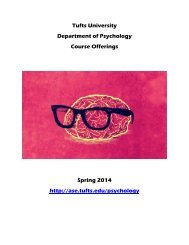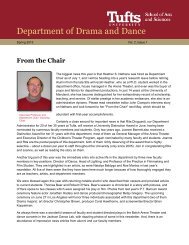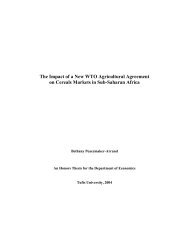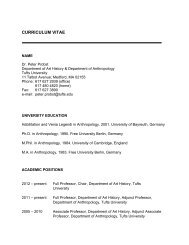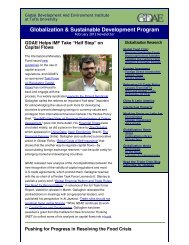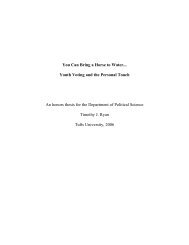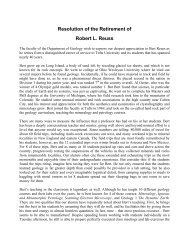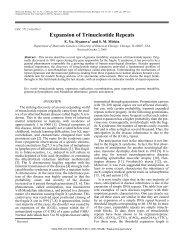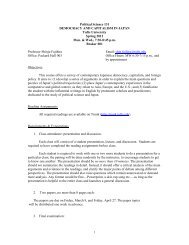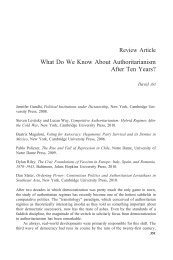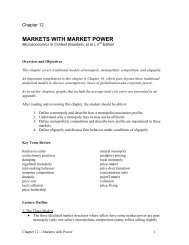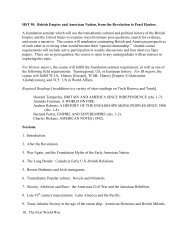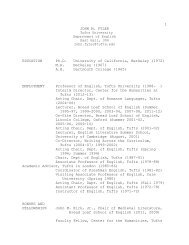Habitats: Guide to On-Campus Living - Tufts University
Habitats: Guide to On-Campus Living - Tufts University
Habitats: Guide to On-Campus Living - Tufts University
Create successful ePaper yourself
Turn your PDF publications into a flip-book with our unique Google optimized e-Paper software.
on <strong>University</strong> Probation Level <strong>On</strong>e. If students are chronically involved in violations of this<br />
policy, they may be separated from their on-campus housing assignment.<br />
Propping Open Fire Doors – These doors are your protection from fire, heat and deadly<br />
gases during the evacuation from the building in the event of an emergency situation.<br />
When these doors are propped open, they are unable <strong>to</strong> perform the functions as designed.<br />
Blocking Hallways, Stairways, Suite/Apartment Lounges or Fire Escapes – This<br />
includes leaving personal belongings like shoes, suitcases, boxes, room furniture, athletic<br />
equipment duffle bags, bicycles, etc. in these areas. In an emergency situation, hallways,<br />
stairways, lounges and fire escapes must be kept clear <strong>to</strong> aide in quick and efficient exit<br />
from the residence halls. Under no circumstances should exits marked “emergency” be<br />
blocked as well.<br />
The Possession of Non-<strong>University</strong> Upholstered Furniture – <strong>On</strong>ly approved CAL TB 133<br />
furniture and furnishings are <strong>to</strong> be used in university buildings. CAL TB 133 (California<br />
Bureau of Home Furnishings) is the standard that the university uses when purchasing furniture<br />
for all buildings including residence halls. Non-compliant furniture is strictly prohibited<br />
because when ignited it does not retard the spread of fire and limit the amount of<br />
<strong>to</strong>xic smoke and gases. This includes non-university provided mattresses as well unless otherwise<br />
approved for a medical condition through Health Services.<br />
The Possession of Halogen Lamps and Multi-Light (“Oc<strong>to</strong>pus”) Floor or Desk<br />
Lamps – National Fire Investigation Reports have determined that possession of such<br />
lights have been the cause of numerous fires on campuses across the country.<br />
Excessive Covering of Wall Space and the Exterior Room Doors with Easily<br />
Combustible Materials – The doors and corridors are part of the emergency egress pathway.<br />
Any combustible material will contribute <strong>to</strong> the spread of fire and prevent the safe<br />
evacuation from the building.<br />
Running Wires of any Kind from Student Rooms <strong>to</strong> Nearby Lounges/Suites – When<br />
Internet or cable wires are run from a student room out in<strong>to</strong> a nearby lounge or suite, this<br />
creates a “trip hazard.” In an emergency situation all paths of egress must be free of such<br />
hazard <strong>to</strong> ensure safe exit from the suite or building.<br />
The Possession of Space Heaters with Open Electrical Coils – Such coils are an ignition<br />
source when located <strong>to</strong>o close <strong>to</strong> combustible material. If a space cannot be adequately heated<br />
via the installed building and heating system, contact the Work Control at 617-627-3496.<br />
The Use of an Outdoor Barbecue Grill Closer than 10 Feet from Any Residence<br />
Hall – It is important <strong>to</strong> keep a safe separation distance between the building and the open<br />
flame. This is proper fire prevention practice should the grill equipment malfunction.<br />
Those wishing <strong>to</strong> use an outdoor grill must gain permission from the Fire Marshal’s<br />
34



